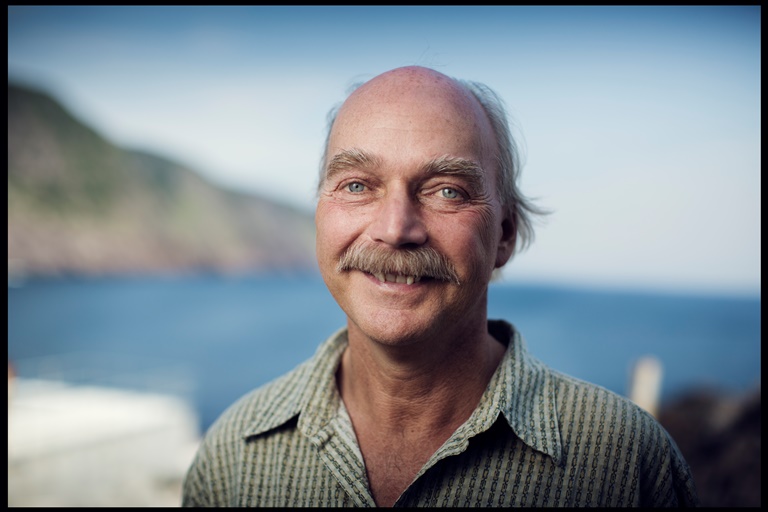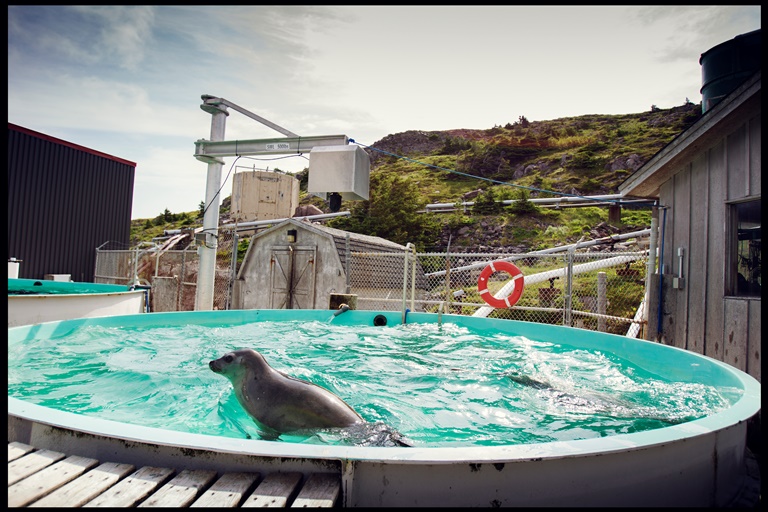'Challenge and reward'
Tyler is stalling. His training session is over, but he’s hanging on. His shiny, mottled head pokes above water, and his dark eyes size up the teaching assistant who has been trying to lure him from the tank. Then he turns and dives, curling away with a flick of his tail.
As a harp seal who has lived at Memorial’s Ocean Sciences Centre (OSC) in Logy Bay since he was a white coat, Tyler knows that every training exercise includes tasty morsels of herring.
“If he thinks there’s a chance that the training will continue, and a chance for more fish, he won’t leave the tank,” explained Daryl Jones, the OSC’s aquarist and supervisor of the seal facility.
But Tyler has to make way for Deane, the youngest of the OSC’s three harp seals. Watching him twist and turn through the water, Mr. Jones tells the two teaching assistants to pack up the training gear—including the herring bucket—and store it in the shed.
“We have to walk away, let him know it’s over for today. That’s how he knows we’re serious.”
Mr. Jones and the teaching assistants leave Tyler alone. They close the gate and descend the stairs that connect the seal tanks to the main building.
Haggling with clever, obstinate animals is all in a day’s work for the man who oversees the world’s only harp seal research station.
“Harp seals are different from other seals and sea lions,” said Mr. Jones. “Very independent, very difficult to motivate. They’re like cats: give me my food and get out of my way. So it’s difficult to train them. They don’t like to be tricked.”
A self-described Saskatchewan farm boy, Mr. Jones grew up exploring the lakes and rivers around his home, and spent summers on the Pacific shore near his grandparents’ home on Vancouver Island. He earned his bachelor of science degree in fish biology and animal behaviour from the University of Saskatchewan, and worked at the Bamfield Marine Station in British Columbia before coming to Memorial in 1989 to pursue his master’s degree. He has been the aquarist and seal supervisor since 1998.
Two of the seals have seniority on him. Babette came to the OSC in 1989, when she was captured as an adult off the Magdalen Islands. Tyler arrived from the Magdalen Islands the following year. Deane is their daughter, born at the OSC in 2002.
 They are local celebrities, the main attraction of the Public Education Program that draws more than 18,000 visitors every summer. Mr. Jones knows that his unofficial job title is caretaker to the stars.
They are local celebrities, the main attraction of the Public Education Program that draws more than 18,000 visitors every summer. Mr. Jones knows that his unofficial job title is caretaker to the stars.
“I don’t ever hear, Daryl, how are you?” he said with a grin. “It’s always, Daryl, how are the seals?”
In fact, the seals are only part of the aquarist’s job. The Ocean Sciences Centre is a “wet building.” Water from Logy Bay is piped throughout the facility, topping up tanks that house fish, invertebrates and plant life. The population is constantly in flux, with divers delivering fresh samples from the North Atlantic for research and lab teaching, or to fill the Public Education Program’s touch tanks every spring. From a 200-kilogram harp seal to a periwinkle the size of a thumbnail, they are all Mr. Jones’s animals.
“Animal health and husbandry is the main job. Teaching students how to look after them, and how to achieve the right conditions for good research.”
Twenty minutes alone has convinced Tyler to leave the training tank. Deane moves in and begins an exercise that asks her to identify and match coloured balls, with a bite of herring as a reward every time she gets it right. It’s a game that can reveal much about the vision, memory and learning ability of the harp seal.
“Deane’s a little more eager to please, compared to Tyler,” said Mr. Jones.
Though he oversees a research and education site teeming with marine life, the OSC aquarist acknowledges that working with the seals is the most satisfying part of his job. Deane, Tyler and Babette are not simply on display, a spectacle for curious visitors. They are industrious and adaptable, a constant source of discovery for marine scientists.
“I often don’t know that they’re capable of doing something until they do it. That’s the challenge and the reward. We’re doing work that has never been done before with harp seals. But of course it’s more than that. They’re family. They’re important to me.”